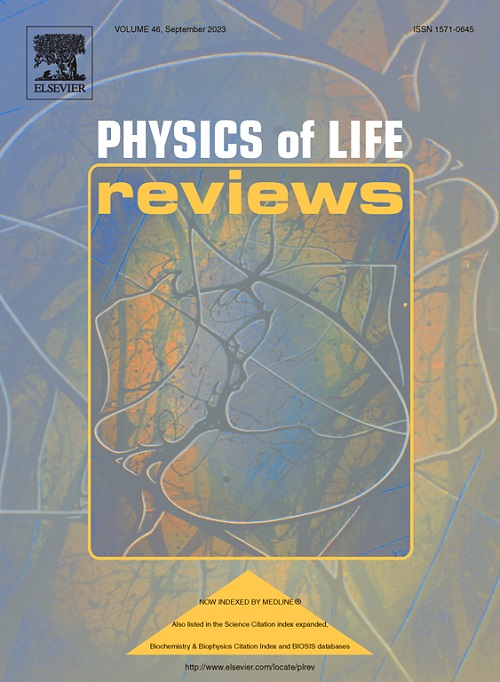Dark brain energy: Toward an integrative model of spontaneous slow oscillations
IF 14.3
1区 生物学
Q1 BIOLOGY
引用次数: 0
Abstract
Neural oscillations facilitate the functioning of the human brain in spatial and temporal dimensions at various frequencies. These oscillations feature a universal frequency architecture that is governed by brain anatomy, ensuring frequency specificity remains invariant across different measurement techniques. Initial magnetic resonance imaging (MRI) methodology constrained functional MRI (fMRI) investigations to a singular frequency range, thereby neglecting the frequency characteristics inherent in blood oxygen level-dependent oscillations. With advancements in MRI technology, it has become feasible to decode intricate brain activities via multi-band frequency analysis (MBFA). During the past decade, the utilization of MBFA in fMRI studies has surged, unveiling frequency-dependent characteristics of spontaneous slow oscillations (SSOs) believed to base dark energy in the brain. There remains a dearth of conclusive insights and hypotheses pertaining to the properties and functionalities of SSOs in distinct bands. We surveyed the SSO MBFA studies during the past 15 years to delineate the attributes of SSOs and enlighten their correlated functions. We further proposed a model to elucidate the hierarchical organization of multi-band SSOs by integrating their function, aimed at bridging theoretical gaps and guiding future MBFA research endeavors.
暗脑能量:走向自发慢振荡的综合模型
神经振荡在不同频率的空间和时间维度上促进人类大脑的功能。这些振荡具有由大脑解剖学控制的通用频率结构,确保频率特异性在不同的测量技术中保持不变。最初的磁共振成像(MRI)方法将功能磁共振成像(fMRI)研究限制在单一频率范围内,从而忽略了血氧水平依赖性振荡固有的频率特征。随着核磁共振技术的进步,通过多波段频率分析(MBFA)来解码复杂的大脑活动已经成为可能。在过去的十年中,MBFA在fMRI研究中的应用激增,揭示了自发慢振荡(sso)的频率依赖性特征,这些特征被认为是大脑中暗能量的基础。关于不同波段的sso的性质和功能,仍然缺乏结论性的见解和假设。本文回顾了近15年来的社会主义社会组织MBFA研究,旨在揭示社会主义社会组织的属性,并揭示其相关功能。我们进一步提出了一个通过整合多波段sso的功能来阐明其分层组织的模型,旨在弥补理论空白,指导未来MBFA的研究工作。
本文章由计算机程序翻译,如有差异,请以英文原文为准。
求助全文
约1分钟内获得全文
求助全文
来源期刊

Physics of Life Reviews
生物-生物物理
CiteScore
20.30
自引率
14.50%
发文量
52
审稿时长
8 days
期刊介绍:
Physics of Life Reviews, published quarterly, is an international journal dedicated to review articles on the physics of living systems, complex phenomena in biological systems, and related fields including artificial life, robotics, mathematical bio-semiotics, and artificial intelligent systems. Serving as a unifying force across disciplines, the journal explores living systems comprehensively—from molecules to populations, genetics to mind, and artificial systems modeling these phenomena. Inviting reviews from actively engaged researchers, the journal seeks broad, critical, and accessible contributions that address recent progress and sometimes controversial accounts in the field.
 求助内容:
求助内容: 应助结果提醒方式:
应助结果提醒方式:


